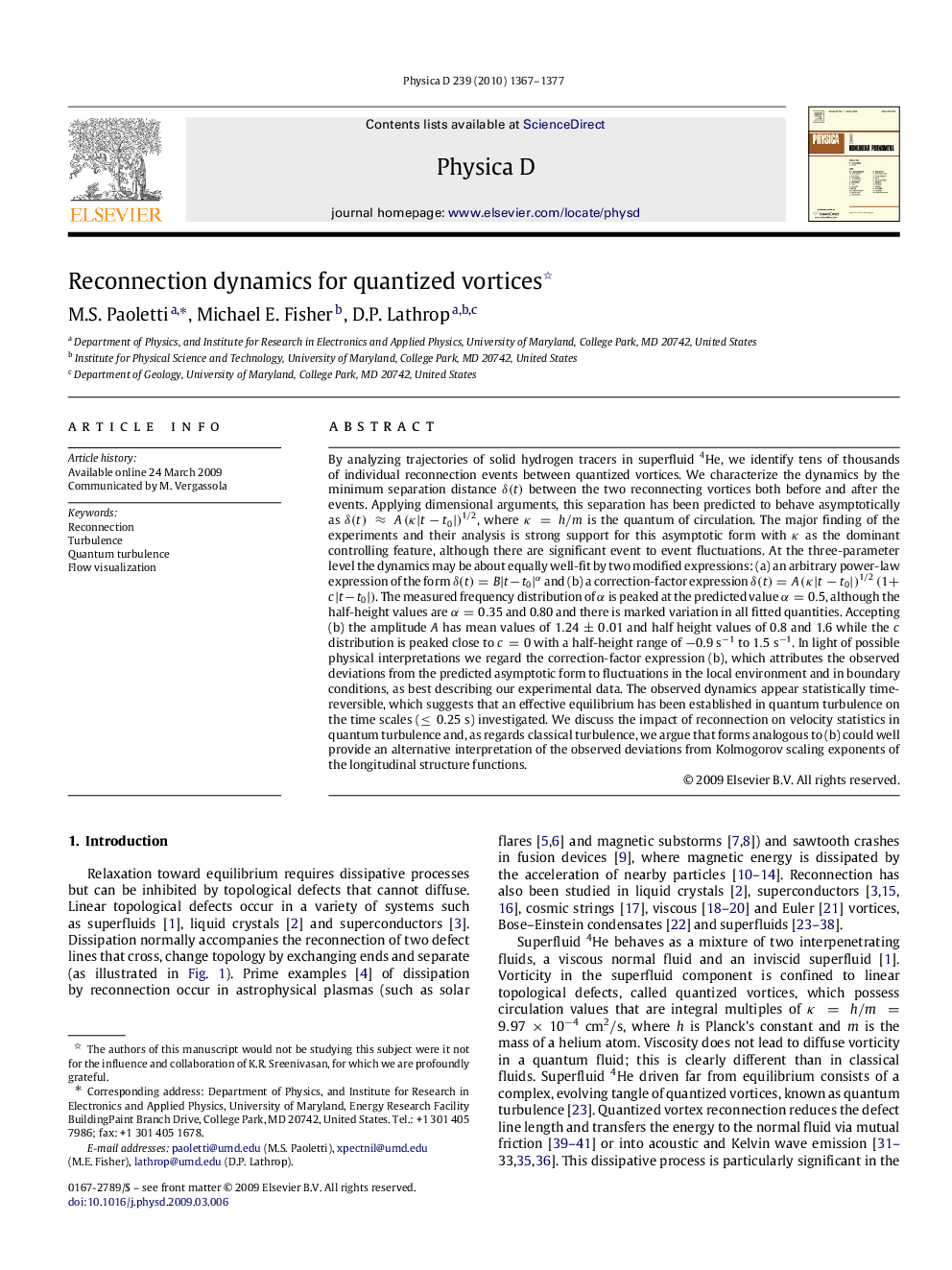| Article ID | Journal | Published Year | Pages | File Type |
|---|---|---|---|---|
| 1896509 | Physica D: Nonlinear Phenomena | 2010 | 11 Pages |
By analyzing trajectories of solid hydrogen tracers in superfluid 4He, we identify tens of thousands of individual reconnection events between quantized vortices. We characterize the dynamics by the minimum separation distance δ(t)δ(t) between the two reconnecting vortices both before and after the events. Applying dimensional arguments, this separation has been predicted to behave asymptotically as δ(t)≈A(κ|t−t0|)1/2δ(t)≈A(κ|t−t0|)1/2, where κ=h/mκ=h/m is the quantum of circulation. The major finding of the experiments and their analysis is strong support for this asymptotic form with κκ as the dominant controlling feature, although there are significant event to event fluctuations. At the three-parameter level the dynamics may be about equally well-fit by two modified expressions: (a) an arbitrary power-law expression of the form δ(t)=B|t−t0|αδ(t)=B|t−t0|α and (b) a correction-factor expression δ(t)=A(κ|t−t0|)1/2(1+c|t−t0|)δ(t)=A(κ|t−t0|)1/2(1+c|t−t0|). The measured frequency distribution of αα is peaked at the predicted value α=0.5α=0.5, although the half-height values are α=0.35α=0.35 and 0.80 and there is marked variation in all fitted quantities. Accepting (b) the amplitude AA has mean values of 1.24±0.011.24±0.01 and half height values of 0.8 and 1.6 while the cc distribution is peaked close to c=0c=0 with a half-height range of −0.9 s−1 to 1.5 s−1. In light of possible physical interpretations we regard the correction-factor expression (b), which attributes the observed deviations from the predicted asymptotic form to fluctuations in the local environment and in boundary conditions, as best describing our experimental data. The observed dynamics appear statistically time-reversible, which suggests that an effective equilibrium has been established in quantum turbulence on the time scales (≤0.25 s) investigated. We discuss the impact of reconnection on velocity statistics in quantum turbulence and, as regards classical turbulence, we argue that forms analogous to (b) could well provide an alternative interpretation of the observed deviations from Kolmogorov scaling exponents of the longitudinal structure functions.
